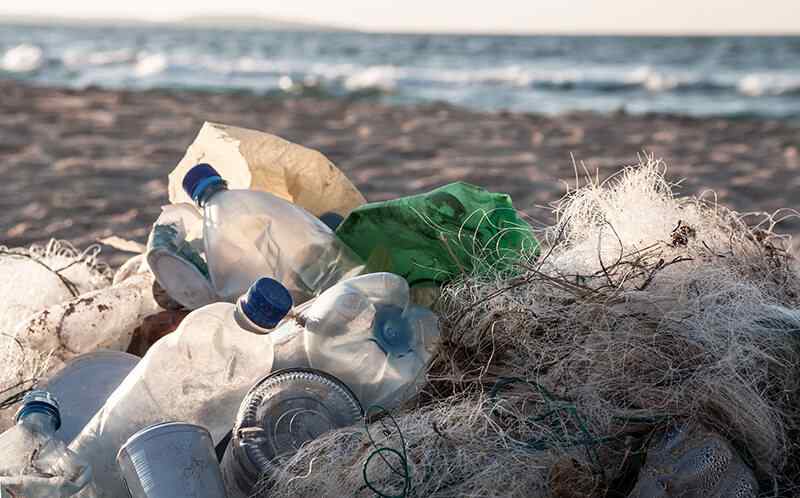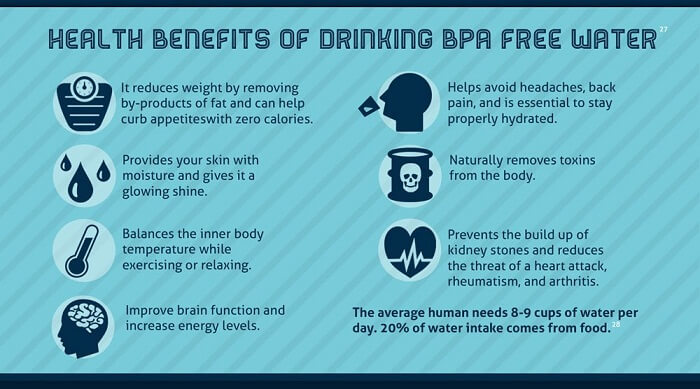
“Thousands have lived without love, not one without water.” Water is the driving force of all. It is a universal need which makes Mother Earth suitable for habitat. You will be surprised to know that currently the bottled water industry in India is worth more than 10,000 crores and is growing faster than the carbonated drinks industry.
The two basic attributes of water are its pH level and TDS (Total Dissolved Solids) level. As per the Indian water quality standards, the pH level of the water should be between 6.5 to 7.5 and TDS level of water should be between 30 to 280 ppm. You can easily check the TDS level and pH level of the water you are consuming through digital TDS and pH meters.
Check TDS level of the Water You Consume
Check pH level of the Water You Consume
(You must check the pH and TDS level of the drinking water at your home and office to know the quality of water you are consuming.)
Before discussing the ill effects of using packaged drinking water, let’s first have a look at some of the,
Most Commonly Consumed Bottled Water Brands in India:
1) Bisleri
It holds 40% of the market share in the Indian packaged drinking water industry and comes under mineral water category.
TDS Level of Bisleri – 160 ppm
pH Level of Bisleri – 7.2
2) Aquafina From PepsiCo
It comes under purified drinking water category.
TDS Level of Aquafina – 4 ppm (2.5 times less than the FDA standards)
pH Level of Aquafina – 5.6
3) Kinley from Coca-Cola
It comes under mineral water category.

TDS Level of Kinley – 12 ppm
pH Level of Kinley – 7.5
4) Railneer from IRCTC
It comes under purified drinking water category.
TDS Level of Railneer – Not Available
pH Level of Railneer – Not Available
5) Qua
It comes under the natural mineral water category
TDS Level of Qua – Not available
pH Level of Qua – 7.55
Consumption of bottled drinking water has increased these days to an unexpected level. They are supposed to be the safest means to acquire clean drinking water. Even the common people prefer drinking bottled water nowadays. No doubt, bottled water is a source of clean water but should they always be preferred?
6.74 gallons of water is used in the production and transportation of a 1-litre water bottle.
If you are in an epidemic region with cholera on the rise, definitely bottled water is your rescue. But are we aware of the problems that drinking bottled water brings with it? Let’s try and get in depth of the consumption of bottled water whether it is a must or not.
Why You Should Avoid Drinking Bottled Water / Packaged Drinking Water
1. Plastic Bottles Lead to Non-Sustainable and Non-biodegradable Waste:
“What you drink in just a few minutes stick around for thousand of years.”

Surely, non-biodegradable waste products are currently posing a serious threat to our environment. Bottled drinking water comes in a plastic package which turns into a rubbish waste on disposal. Disposing of such large amount of plastic waste is not feasible leading to natural disasters and phenomenon like outgassing. On constant exposure to heat, the plastic begins to melt which causes it to release toxic gases into the atmosphere. This process is referred to as outgassing.
India is in top 20 countries which dump maximum plastic in oceans
In the US alone, 6 out of 7 consumed water bottles are downcycled (a recycling practice in which an item is broken down into its component elements and materials). The toxins released from these bottles reach watersheds and soil and contaminates the other resources of water as well.
Various Impacts of Packaged Drinking Water on Environment –

On one side we pledge to ban plastic products in order to reduce its use while on the other hand, we are busy encouraging the sale of bottled water. Non-biodegradable wastes have proven to be harmful to our environment causing depletion of our resources. This hence can be one small step towards reducing the plastic waste output if we avoid drinking bottled water.
2. 25% of the Bottled Water is Sourced From Tap Water
You might have read in some of the bottles, that the water is pure and freshly extracted from the mountain streams, but to your dismay, only a few of them come from those streams and springs. As much as 25% of the bottled water is sourced from the tap itself. Companies filter this tap water and sell it to you at several thousand times the cost of tap water.
3. BPA Trouble
Not only does the plastic cause trouble by being a non-degradable waste, but also known for emitting toxic pollutants into the ground water sources. Most of the reusable bottles are made of Bisphenol-A (BPA) which is known to be carcinogenic and is linked to several health damages like reproductive disorders, heart diseases and insulin resistance. These chemicals can seep out from the plastic if exposed to heat or if not used for a long time.
Health Benefits of Drinking BPA-Free Water

4. Lower Water Table Level
Such increased production of bottled water decreases the ground water level. The ground water level is replenished by rain and filtered by natural means. Imagine the world without water if this water table level drops down to minimal levels.
5. Tap Water Vs Bottled Water
Natural tap water consists of some important minerals required by our body which is not present in bottled water. Fluoride is one such important element in tap water which is absent in bottled water. Municipal Corporation adds it intentionally because of its beneficial effects. It helps in the development of teeth among children, the deficiency of which leads to calcification and mineralisation defects in teeth.
The only way to ensure fluoride intake is through the water. A certain amount of fluoride intake is beneficial for the children. However, an overdose would be harmful. Hence, care must be taken to ingest it in limited levels and prevent both its deficient as well as harmful state.
6. Adulteration Problem
There have been reports of adulteration of bottled water in many cases. This is the most serious problem as it leads to several health hazards. If reports are to be believed, many used water bottles are refilled with contaminated tap water and sealed with glue. This is especially common in cases of water shortage and in small cities.
7. Not Economical
Buying drinking water is not at all economical for a middle-class man. There needs to be an alternative. Moreover, storing water for a long period of time is difficult as they can only be used within 4 months post their production date.
I do not wish to implement a complete ban on bottled water. But tap water can always be purified and manually turned into pure and safe drinking water, which is both economical and feasible for the family.
Ditching bottled water would not only help you live healthily but also save your hard earned money. As the saying goes, “Pure Water is the World’s first and foremost medicine.” The key to having safe drinking water is to avoid drinking bottled water as much as you can.
When you ditch the bottled water, you are left with a number of positive outcomes such as you live healthily, you save money and you are giving your contribution in saving the environment and making it better for our future generations.
A change is simple, and it makes the real difference.
If you liked the article, share it with others too and give your contribution in making people aware of the harmful effects of drinking bottled water.